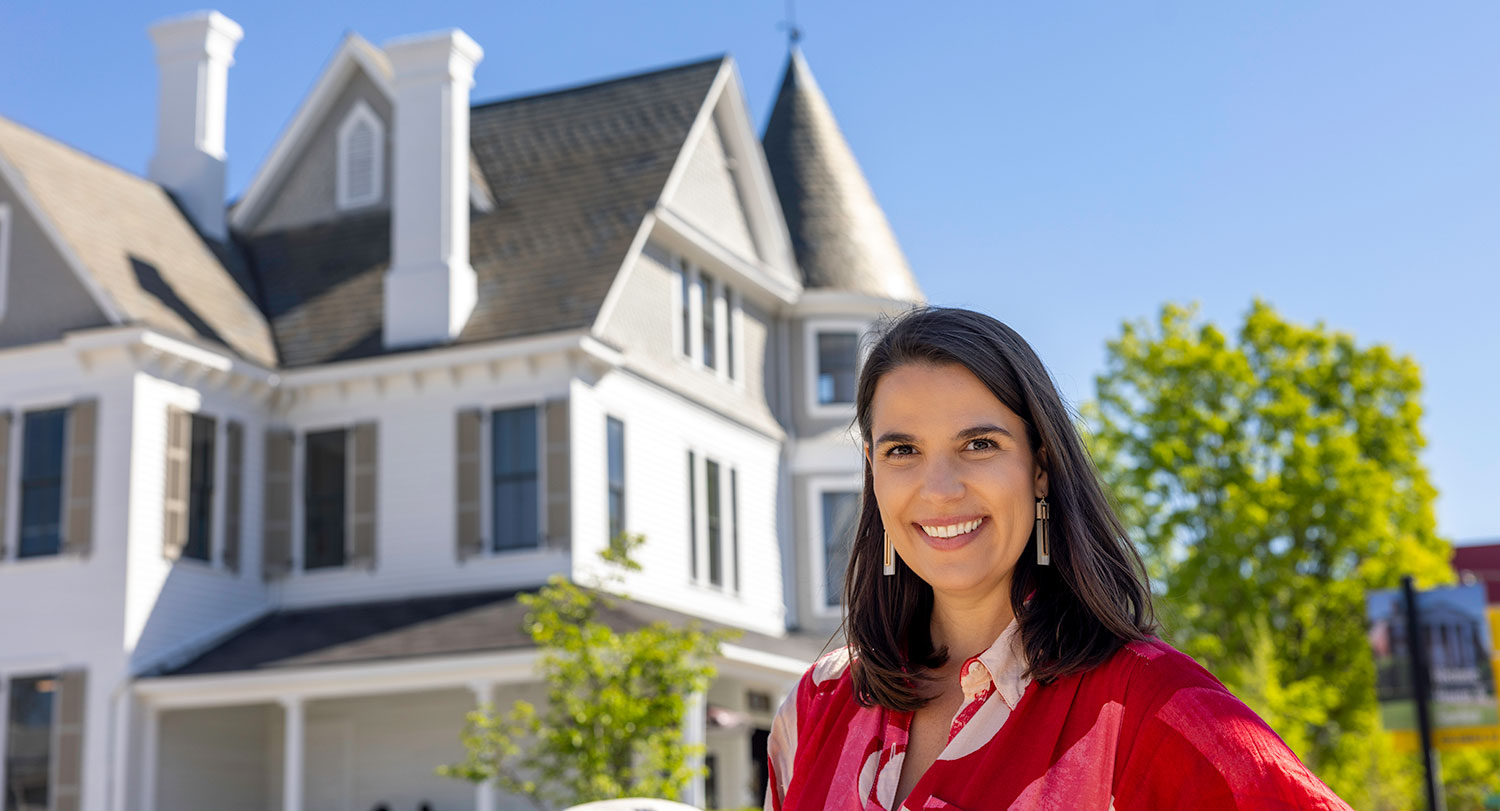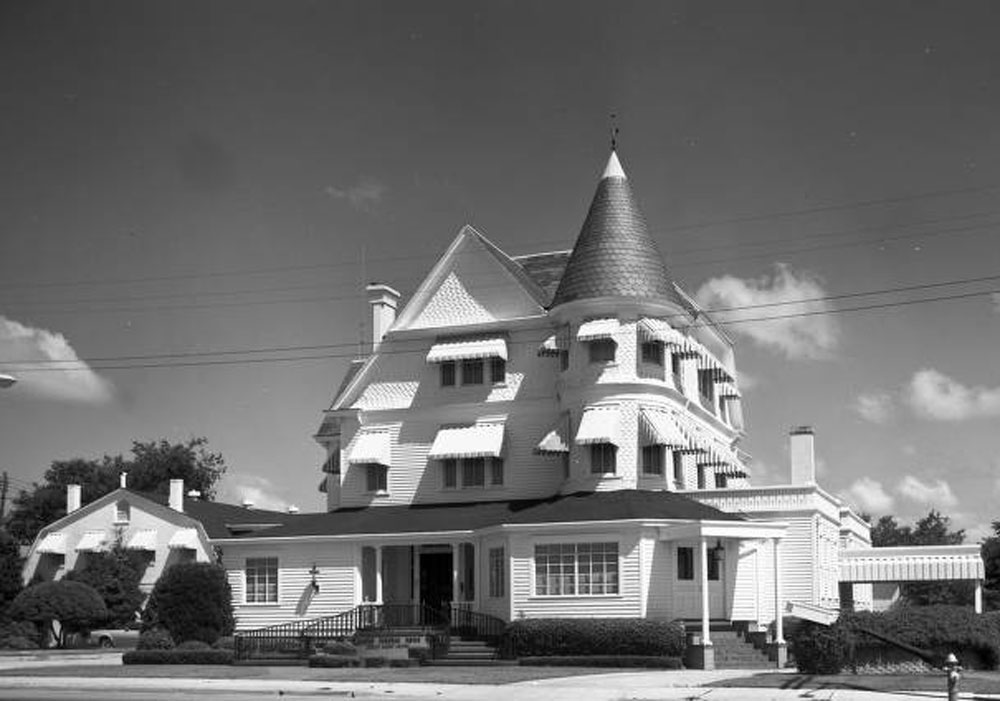
Finding a sense of place
Public history alumna helps developers preserve historic buildings
Historic preservation consultant Janie Campbell, 2016 public history, has made a career of going into opportunities with low expectations and coming out of them realizing they were exactly what she needed at the time.
“I've been given so many wonderful opportunities, that maybe initially I didn't see as wonderful opportunities, that have turned out to be incredibly helpful and meaningful throughout my career,” says Campbell, who works with Columbia law firm Rogers Lewis helping their clients take advantage of historic preservation tax credits. “Every time I turn my nose up at something, it turns out to be really wonderful.”
Her current career is one she could never have imagined when she was an undergrad at Randolph College in Lynchburg, Virginia.
“I've always had a passion for historic buildings, and I just didn't know how to translate that passion into a paying job,” she says.
After working a couple of years at a Washington, D.C., museum, she decided to look into graduate school, specifically public history degrees.
“USC had one of the oldest programs in the country, and it was highly regarded, so I took my shot,” she says. “I was very fortunate and was super excited to move to Columbia and get the grad school and the Southeastern Conference experience all combined after going to a small liberal arts college.”
Once at USC, Campbell was drawn into South Carolina’s rich history through then- program director Bob Weyeneth, who often took students on a weekly “field day” to Charleston to explore that city’s historic preservation work.
“My year, we did it in Columbia, and of course at first, I was like, ‘We're not going to Charleston?’” she says. “But I'm so grateful that it ended up being in Columbia because I got to meet so many of the players I deal with now. I also learned about Columbia in a deeper way that I wouldn't have necessarily gotten just in the classroom.
“I loved that immersion in the community.”
Campbell says another key class that helps in her current job was Lydia Brandt’s architectural history class.
“The class that semester was on modern architecture. And I was like, ‘Who wants to study that?’” says Campbell, who also earned a certificate in historical archaeology and cultural resource management at USC. “This was 10 years ago, so it was on the frontier of preservation.
“And I have such an appreciation for modern architecture now. So many of my projects have been modern buildings.”
Historic opportunities
Working at Historic Columbia as a graduate assistant and later a full-time employee, Campbell learned that historic house preservation is more than just architecture.
“The material culture that you're seeing and touching every day and how that relates to the buildings is so important. That’s the mantel pieces, the windows, the floors, the trim, just learning a lot of material culture through that experience has helped me in my career as well,” she says.
She also met her current boss, Columbia attorney Robert Lewis, 1980 political science, 1984 law, who is on the board of Historic Columbia.
Lewis has been involved in renovating and preserving historic buildings for more than 20 years. He specializes in using available tax credits for historic preservation to help offset the costs of purchasing and renovating buildings. He became so good at it that people began calling him for advice, Campbell says. But Lewis needed help on the rigorous historic research needed to take a project from idea to tax credit.
For a recent high-profile project, Campbell’s team worked on the Whaley House in downtown Columbia, across Gervais Street from the Joseph F. Rice School of Law.
The house had been a private home, then was used for decades as the Dunbar Funeral Home. It had been empty for years when Campbell began researching the building’s history.
One key feature of the property had been open porches that the funeral home had enclosed. Those were reopened during the renovation using historic photos to show its original appearance.
“We’re changing it a little, but changing it appropriately,” she says.
After the work is done, Campbell’s team returns to take photographs showing how they preserved various parts of the building while making it useful to the owners — in this case, the building has apartments and a coffee shop downstairs that makes use of the “new” porches out front.
When Campbell was first asked to consult on a project for Lewis, she didn’t think she would like working for a law firm, she says.
“I thought ‘I'm here at Historic Columbia that's so highly regarded and well renowned, and I'm going to go to a law firm with a bunch of stuffy attorneys? How is that going to work?’” she says. “It has turned out to be the best decision I ever made.
“In the almost eight years I've been here, we've done more projects than any firm in the state — representing everybody from mid-century modern motels in Myrtle Beach to a four-story private residence that's now a bed and breakfast on the Battery in Charleston.”
Other projects have included textile mills in the South Carolina Upstate, old schools in the Pee Dee and a 1970s building at the former Charleston Naval Shipyard.
“So we’ve had a wide range of experiences,” she says.
Award-winning work
Those experiences have not gone unnoticed. In May, Campbell received Historic Columbia’s 2024 Preservation Leadership Award for her work over the past eight years that has included 85 successful federal historic tax credit projects in South Carolina, 34 in Columbia and West Columbia.
“If you look around downtown, it would be challenging to find a block with a building that Janie hasn’t touched,” Columbia’s historic preservation planner Amy Moore said in the award announcement.
Campbell says it is the variety of projects that make her job so interesting.
“I do see myself doing this long term,” she says. “Being able to learn about South Carolina and visit these little towns I probably wouldn't have ever had on my radar is really fun and I get to see an impact in a community that maybe didn't believe in preservation, like Myrtle Beach.
“Being able to prove that keeping what you have can make such a difference and change the way people view things.”
In the case of Myrtle Beach, the Grand Strand Brewing Company went into the preserved five and dime building that overlooks the site of the former Myrtle Beach Pavilion.
“You can see the ocean and you can just see the layers of history of Myrtle Beach, like we're sitting in a building that dates to the ’50s, but as part of a block that was developed in the ’30s when Myrtle Beach really started to take off. And now we're looking at, you know, a few little 1960s motels and 1980s high rises and brand-new buildings. And you just get the complex tapestry of all the different layers.”
Campbell is hoping to find a project in which she can have an ownership stake in the building and take on a role beyond consultant.
“I say this as somebody who does not necessarily believe every building needs to be saved, but I just think there's an appropriate way to do things,” she says. “And when I see it done just so horribly, it hurts my heart.”
Banner image: Janie Campbell stands outside the renovated Whaley House. Center image: W. B. Smith Whaley House/Dunbar Funeral Home, 1979. Photo from the Russell Maxey Photograph Collection, Richland Library Digital Collections.
